The Crisis of Disconnection: Why It’s Time to Rethink Your Growth Strategy [HubSpot Data]
This post is a part of The Crisis of Disconnection, a thought leadership series examining the latest research and insights to uncover how businesses can meet their growth goals, even amidst unprecedented changes to the way we work.
![The Crisis of Disconnection: Why It’s Time to Rethink Your Growth Strategy [HubSpot Data]](https://blog.hubspot.com/hubfs/Google%20Drive%20Integration/%5BFinal%20Copy%20-%20Blog%20%232%5D%20The%20Crisis%20of%20Disconnection%20Why%20It%E2%80%99s%20Time%20to%20Rethink%20Your%20Growth%20Strategy-2.jpeg#keepProtocol)
This post is a part of The Crisis of Disconnection, a thought leadership series examining the latest research and insights to uncover how businesses can meet their growth goals, even amidst unprecedented changes to the way we work. If there’s a topline takeaway from the research that prompted us to call The Crisis of Disconnection by name, it’s this. The growth challenges you faced in the last decade won’t be the growth challenges you face in the next decade. If you’ve been following along, we’re glad you’re back. If you’re just joining us now, we’re glad you’re here. To recap, here are four things keeping the savviest leaders we know up at night: You’ve seen the data. You’re tracking the trends. But how will The Crisis of Disconnection manifest in your business? Let’s take a closer look at the three overarching disconnects with material impact on scaling companies: What’s not pictured, and adding a sense of urgency to it all? The macroeconomic fluctuations that seem here to stay. Oscillations in supply and demand, rumors about an impending recession, and decreased access to capital are causing leaders across industries and functions to re-evaluate how to invest in growth. Let’s consider each core complexity — and its consequences. If having a streamlined tech stack with clean, connected data feels like an increasingly pressing priority, you’re one of many re-examining their CRM solutions (for good reason). One in four businesses today say disconnected data and systems are among their chief concerns as they grow. And the ever-popular point solution approach isn’t without problems. Consider the Impacts to Your People Impact 1: Proliferating tools are creating complex, bloated tech stacks that are increasingly hard to use, integrate, and maintain. The number of martech solutions is up 24% from 2020. Additionally, new sales productivity research shows: Impact 2: Disconnected systems lead to decentralized data, which causes teams to spend more time searching for answers and less time focusing on high-value activities. Impact 3: Frequent context-switching results in productivity loss at every level. Consider the Impacts to Your Bottom Line According to our research, companies with less connected data & systems are seriously disappointed in the ROI of their tech stacks: On the flip side, companies see greater ROI when data and systems are more connected and CRM tools are all on one platform: But why does connection & integration of your tech stack make such a difference to ROI? To answer that question, let’s take a look at how ROI is calculated: As you can see in the equation above, total cost of ownership is one of the major factors in ROI — as TCO increases, ROI decreases, fast. And, as we’ve learned in our research, having more point solutions leads to significantly higher cost of ownership, primarily driven by the increased personnel costs associated with using multiple tools. So, even if a business is getting the same gains from their tech stack, using too many point solutions is likely going to decrease their ROI compared to a company that has consolidated more of its tools on a single platform. As you can see, streamlining your tech stack does more than reduce friction between your systems and data. It reduces your total cost of ownership. It makes you more likely to weather the volatility ahead, with 52% of businesses with excellent data connectedness reporting they feel well-equipped to grow and thrive, despite the current state of the economy. And it connects your sales, marketing, and service teams (the importance of which we’ll talk more about below). As you may have guessed, disconnected systems don’t just lead to disconnected data — they also contribute to feelings of disconnection between teams. At the risk of stating the obvious: the way many of us work took a 180 in 2020. No fewer than 80% of U.S. employees say the crisis materially affected their daily work lives. Within a year, Zoom generated a mere $4 billion in revenue (a 53% increase year-on-year), with meeting participants increasing by 2900%. Many of us had to learn — and are still learning — how to collaborate digitally instead of in-person. There have been some upsides (access to more diverse talent, time saved commuting, meetings attended in pajama pants), along with some challenges. What does this mean? The playbook for attracting, supporting, and retaining employees is — you guessed it — changing. Employees clearly crave connection and are more likely to feel dissatisfied without it. What’s equally true? Creating moments of connection is more challenging in an increasingly remote world run on siloed systems and partially accessible information. And as The Great Resignation is already showing, the consequences of ignoring how employees feel — inside and outside of work — won’t be insignificant. If you’re getting the sense that these disconnection challenges are compounding, you aren’t wrong. Disconnected systems, data, and people are all contributing to another problem — brands are facing more hurdles as they try to connect with their customer base. Before we double-click on the data and what it means for you, here’s a high-level summary (with a spoiler: what worked then won’t work now): In case you don’t want to take our word for it: What does this mean for your business? It’s getting harder (read: less effective and more expensive) to reach potential customers. And if/when you do reach them, it’s getting harder to exceed their expectations (with fewer insights about their personal preferences than ever). Without a single source of truth about customers, it’s harder for teams to deliver personalized, connected customer experiences. Although 80% of marketers consider personalization the key to increasing revenue and enhancing customer experiences, HubSpot’s research shows that over half of marketers are missing critical data on their target audience that prevents them from delivering that personalized experience. So where does that leave today’s go-to-market teams? So far, we’ve covered the “what” and “so what” associated with The Crisis of Disconnection. In the final installment of this series, we’ll cover the most important question of all. Now what? Stay tuned for our next post, and in the meantime, learn how HubSpot can help you connect all the dots.
Disconnection in Context: Challenges for Go-to-Market Teams
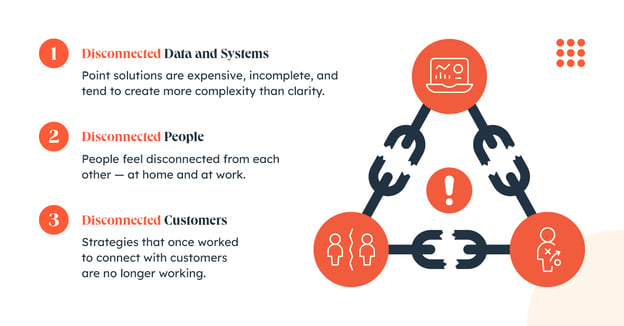
1. Disconnected Data and Systems Leads to Decreased Efficiency and Value to Your Business
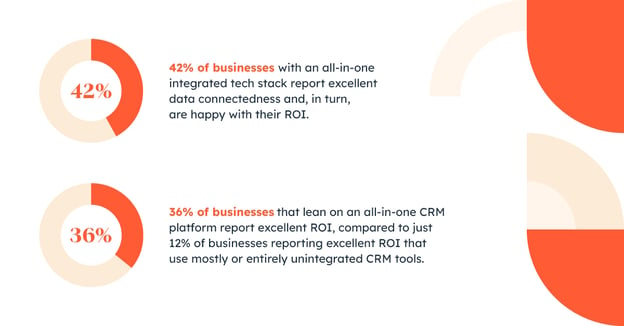
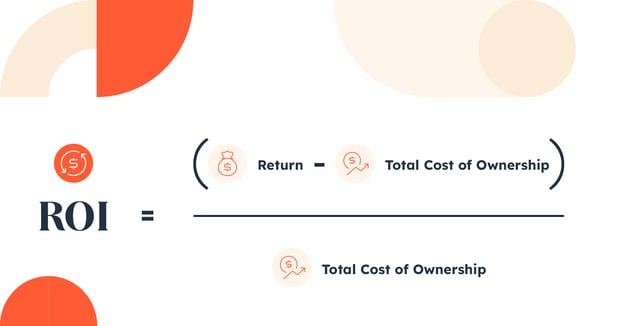
2. Disconnected People Leads to Decreased Sense of Community and Satisfaction
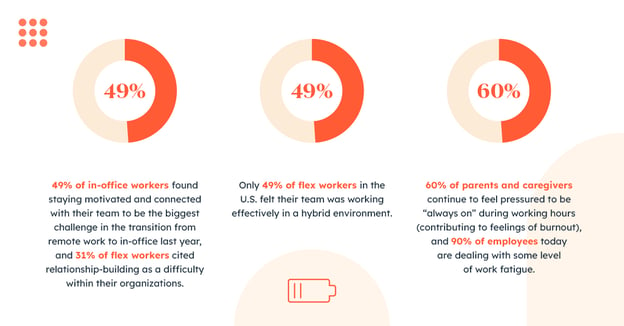
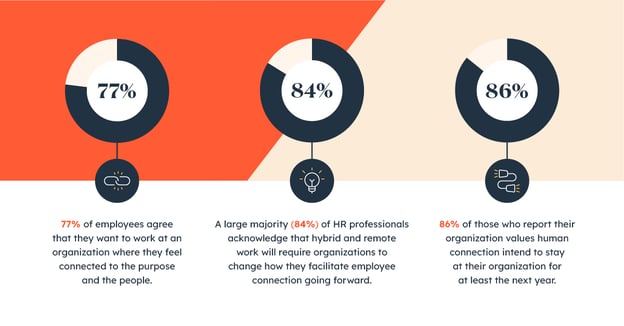
3. Disconnected Customers Leads to Decreased Interactions and Opportunities to Delight
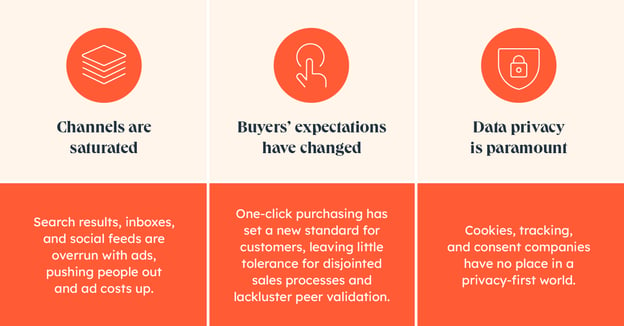
Next Steps

 Konoly
Konoly 














![Product Market Fit with Scott Cunningham [VIDEO]](https://www.digitalmarketer.com/wp-content/uploads/2022/05/Copy-of-FACULTY_KasimAslam-1920-×-1080-px-2.png)



















